County Fair Exhibits Delight Visitors with Low-Water Use Landscaping
If you’re ready to move ahead with plans to create a water-efficient landscape, the San Diego County Fair is a good place to start. There are several award-winning examples of creative low-water use and native plant gardens at the fair’s popular Paul Ecke Jr. Garden Show exhibit area. (The San Diego County Water Authority has partnered with the state’s Save Our Water to sponsor a booth at the exhibit area).
This year, the Water Authority sponsored the California Native Plant Society exhibit, which received multiple category awards:
- First Place, Paul Ecke, Jr. Garden Show Theme Award
- Edwin Frazee Donated Award for best use of flowering plants
- San Diego Floral Association for best landscape entry by a non-commercial, non-professional group
- Master Gardener Association Earth-Friendly Gardening Donated Award
- Plants of Distinction – four ribbons awarded
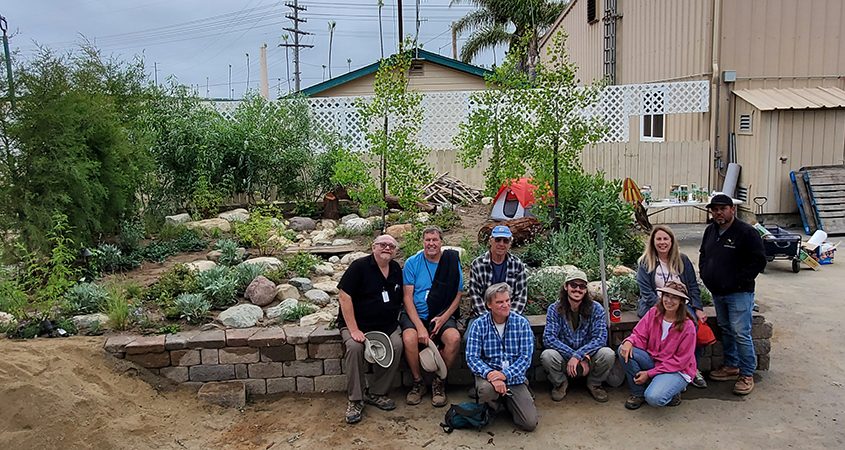
California Native Plant Society Garden Committee volunteers pose with their project. Sitting (L to R): Greg Rubin, Bob Smith, Al Field, Christine Hoey. Kneeling (L to R): Dana Pearce, Nicolas Unger, Lisa Leondis Standing: Leo Hernandez. Photo: California Native Plant Society
The CNPS display uses native plants in a garden with a rustic camping theme. Debby Dunn, Water Resources Specialist with the Water Authority, says the exhibit depicts both creativity and the benefits of low-water-use plants in landscape designs.
Californians learning about low water use landscape design
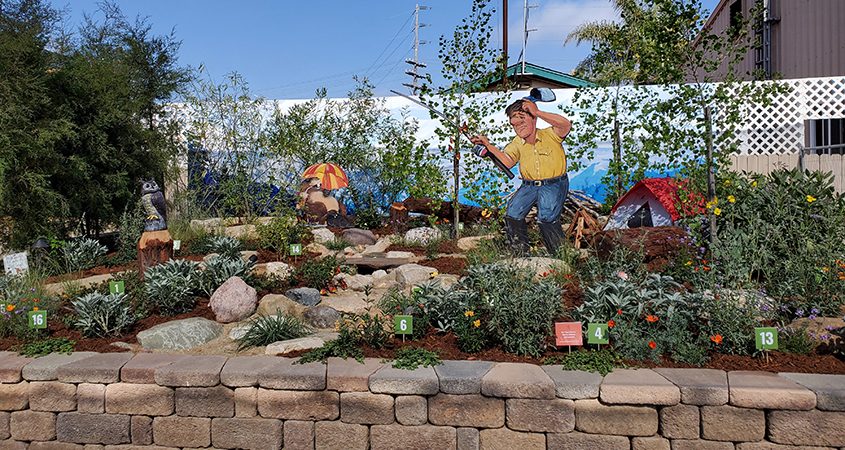
The California Native Plant Society used a variety of plants, all identified with signage to educate visitors. Photo: California Native Plant Society
Dunn explains how Californians are changing their vision of the ideal home landscape design.
“Our vision of landscapes featuring predominantly turf and a border of hedged plants is changing. In its place, we’re upgrading our landscapes with water wise plants, both native and also waterwise plants from Australia and South Africa. All these plants bring in more color while inviting birds, bees, butterflies, and hummingbirds. All this and less water to help them thrive,” said Dunn.
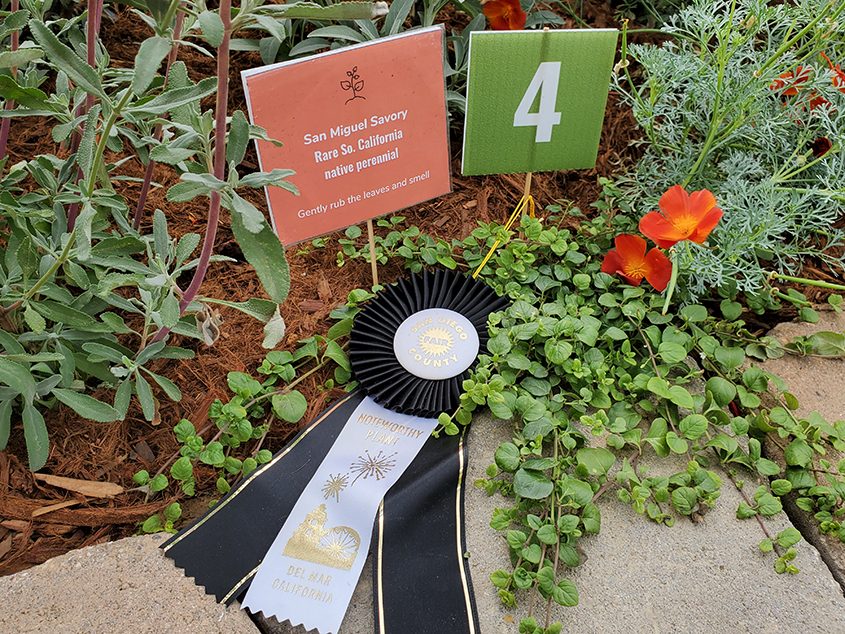
The use of San Miguel Savory, a rare California native plant, won a “Noteworthy Plant” ribbon at the San Diego County Fair. Photo: California Native Plant Society
Dunn says California gardeners are adjusting to the seasonal rhythms of native plants, which may bloom for short periods and then become dormant. “You can plant so that there’s always a stunning showstopper in your garden. It’s about putting the right plant in the right place. It’s changing the way we see landscaping,” explained Dunn.
“Some native plants are beautiful for part of the year, and then they go dormant. That’s how nature works. Like a butterfly, they go through different stages.”
Low-water use gardens suit many design styles
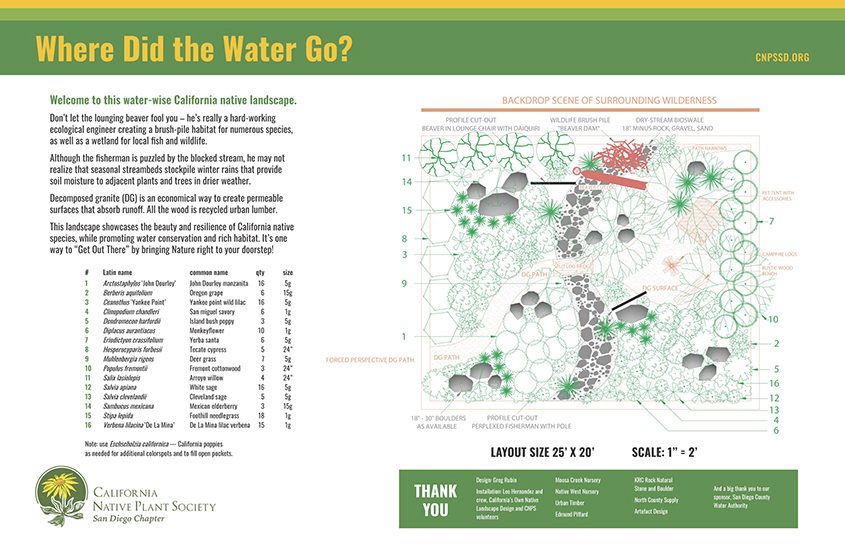
Visitors to the garden exhibit can learn which plants were used in the display from an informational sign, and use them as inspiration for their own yards. Graphic: California Native Plant Society
Dunn said low-water-use landscapes offer many different styles to suit individual tastes and needs, similar to interior design styles. “Everyone’s got their look and their style. It’s the same with plants. There are so many options and choices with these plants. There’s something for everybody.
“If you’ve got kids and dogs, you may need grass. But if the only person walking on the grass is the person mowing the grass, you likely don’t need the grass. There are countless beautiful native and California-friendly plants you can place in your garden that will bring you entertainment and joy,” said Dunn.
Fun garden display educates with humor
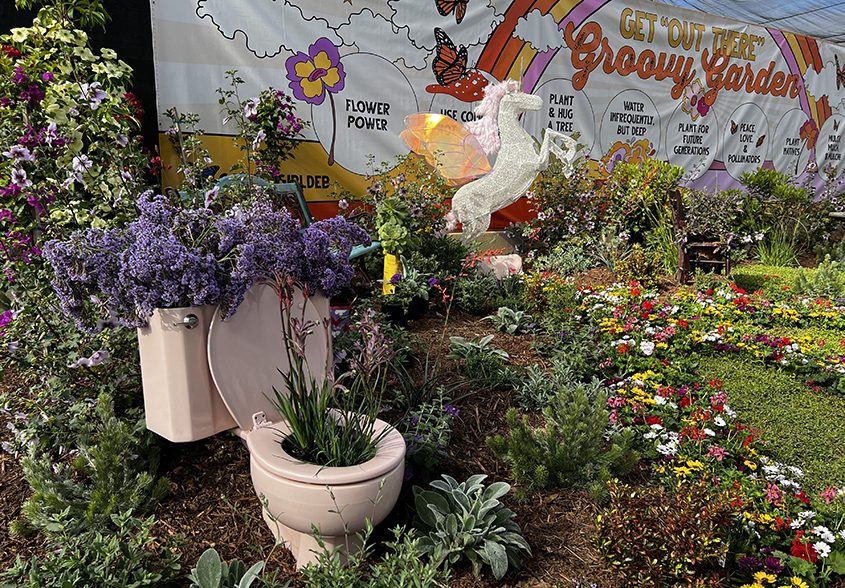
Water Authority Water Resource Specialist Debby Dunn’s “Groovy Garden” exhibit won the Edgar Engert Educational Merit award. Photo: Debby Dunn
Dunn won the Edgar Engert Educational Merit award for her own individual display, a whimsical, colorful waterwise plant display she titled the “Groovy Garden.” Dunn called it “a dream come true.”
“It’s all about Flower Power and inviting birds, bees, butterflies, and hummingbirds,” said Dunn. “About 25% of the plants are native.”
In addition to features like a dry streambed, rain chain, and rain barrel to demonstrate rainwater capture, Dunn repurposed colorful thrift store and garage sale finds to educate through imagination and humor and make a lasting impression.
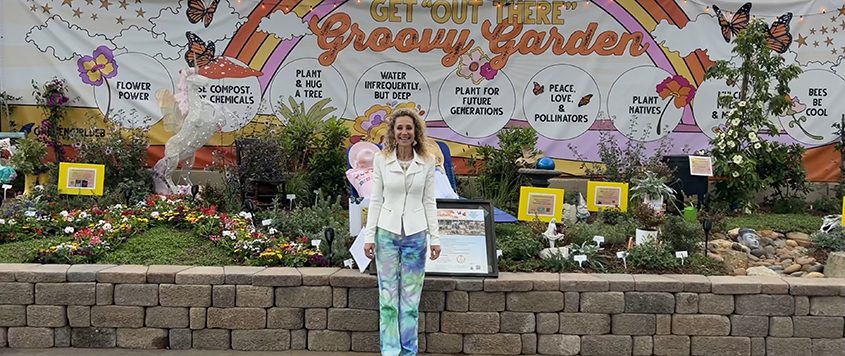
Water Resources Specialist Debby Dunn poses with her “Groovy Garden” exhibit. Photo: Debby Dunn
WaterSmart and WaterWise
“I created different rooms including a bedroom, kitchen, living room, and even a bathroom,” said Dunn. “Everything is upcycled including my pink toilet. It is there to remind people that toilet leaks are the number one cause of water loss. One running toilet can flow up to 200 gallons an hour, enough water to fill a pool in four days.”
Dunn used humorous puns with her signage. “My goal is to bring them in with the gorgeous plants and while they’re there, educate them about irrigation, mulch, composting, and more,” she said.
Award winning exhibits open through July 4
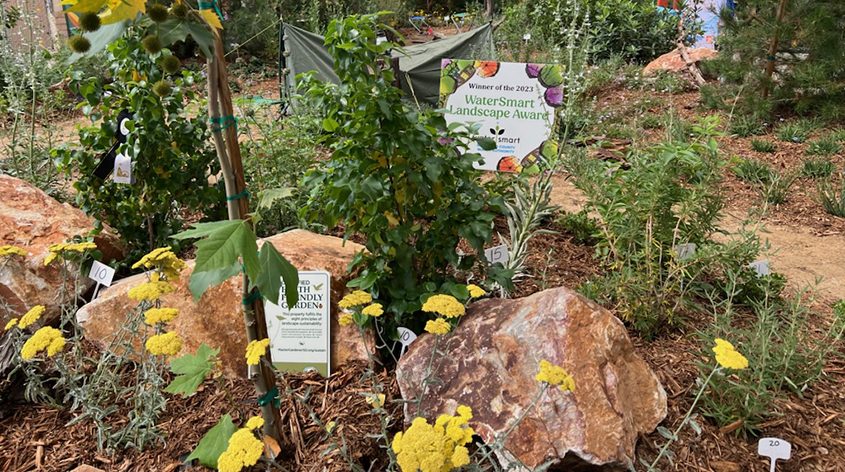
The San Diego County Water Authority award was presented to the Walter Anderson Nursery display using native California plants. Photo: San Diego County Water Authority
The Walter Anderson Nursery exhibit is this year’s recipient of the Water Authority sponsored “WaterSmart Landscape Award” for its beautifully blooming native plant garden display.
The San Diego County Fair Paul Ecke Jr. Garden Show is open Wednesday through Sunday from 11 a.m. to 10 p.m. through Friday, June 30, and open daily from Saturday, July 1 through Tuesday, July 4, 11 a.m. to 10 p.m. For more information about the Garden Show, visit the Fair’s website.
It's a beautiful day to visit the Fair, San Diegans! Don’t forget to stop by our Save Our Water booth and talk about all things California water-wise plants! we will be located with all the other amazing Garden Displays at the Paul Ecke Jr. Garden Show exhibit. 🎡🪴💦 pic.twitter.com/nFiongl2nv
— Save Our Water (@saveourwater) June 10, 2023
(Editor’s Note: The San Diego County Water Authority is sharing a booth with Save Our Water at the San Diego County Fair. Check out the booth for tips and inspiration on how to create your beautiful water-wise garden. The booth is part of the “Thanks for Planting Me!” campaign, which is supported with grant funds from by the Water Quality, Supply and Infrastructure Improvement Act of 2014, administered by the State of California, Department of Water Resources. For more information, go to www.sdcwa.org/plant-me.)



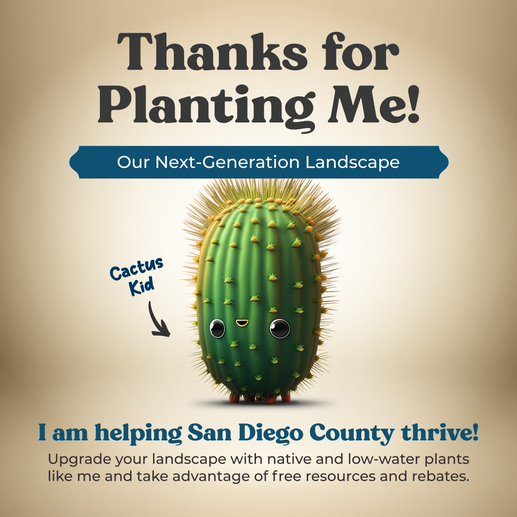
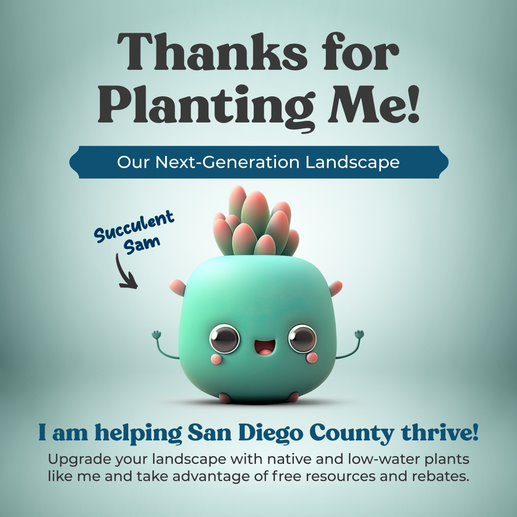
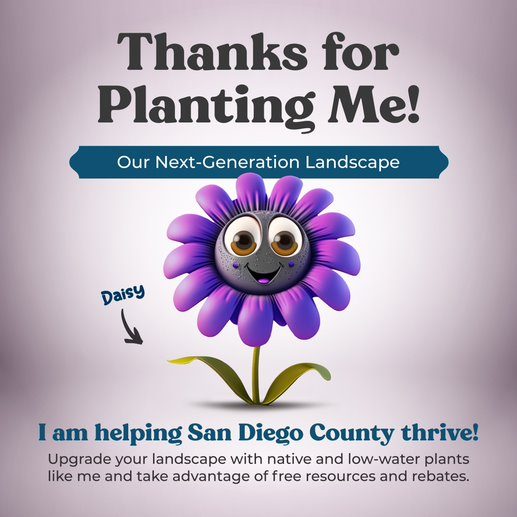
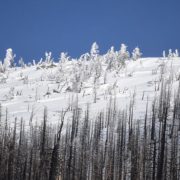

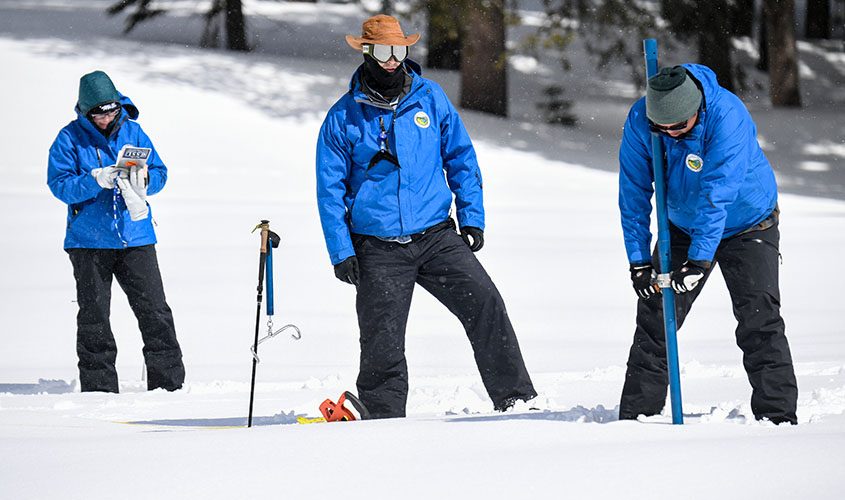
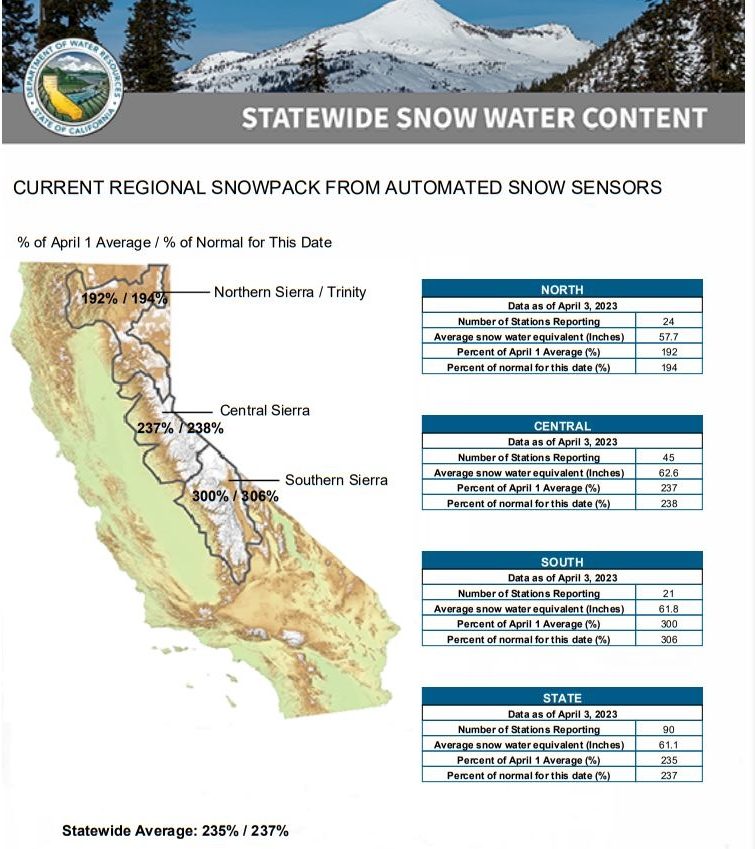
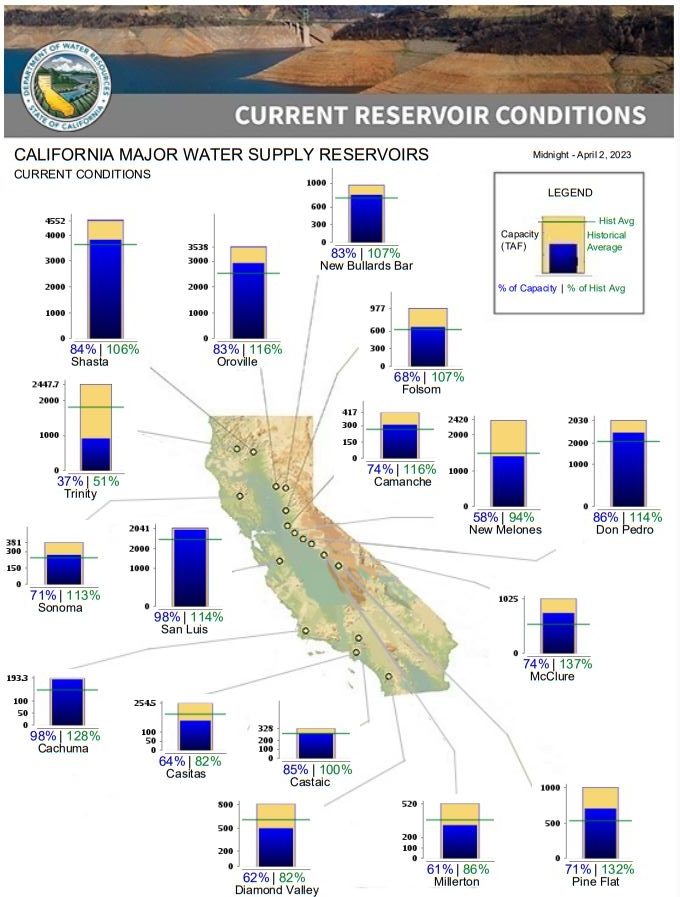
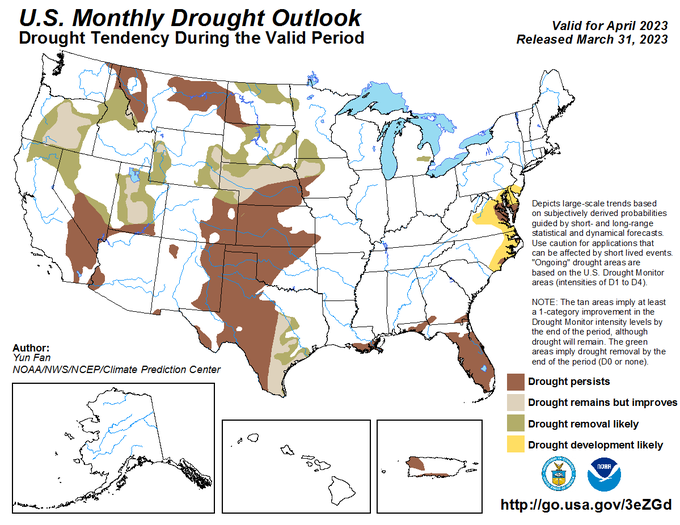


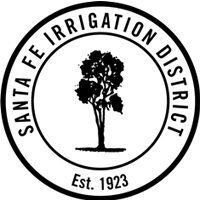

 Sweetwater Authority Logo 2019
Sweetwater Authority Logo 2019

